Monitoring black petrels on Great Barrier Island
Great Barrier Island’s Mount Hobson (Hirakimata) stands 621 metres tall and is home to the largest breeding colony of black petrel (taiko) in the world. Ecologist Rachel Hufton shares her experience monitoring their populations.
The slopes of Mt Hobson are covered in semi-mature forest, with the remnants of precious ancient conifer forests. The forest is filled with endemic plants found nowhere else in the world, such as totara, rimu, kirk’s pine, and kauri. During the day the mountain is dominated audibly by prehistoric raucous call of kaka, coupled with contrasting melodic tones of the grey warbler.
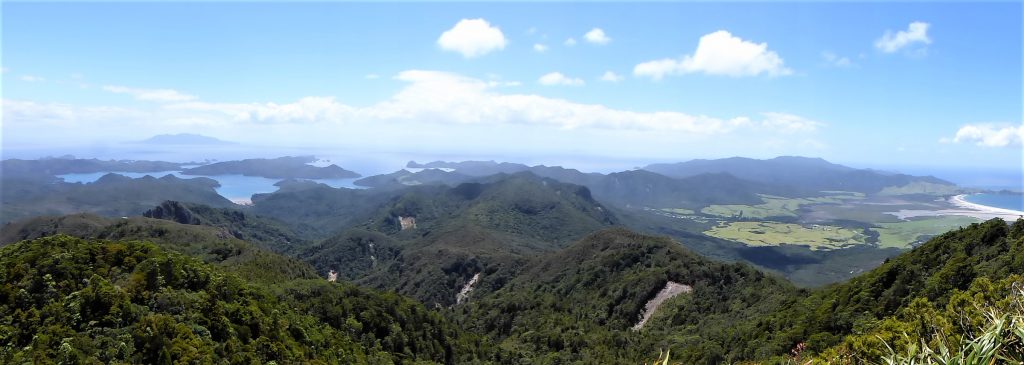
The view from Mt Hobson with Little Barrier Island in the far distance (Photo by Rachel Hufton).
As dusk turns to night, the summit of Mt Hobson comes alive with the distinctive clamour of black petrel clacking. This is the male being as vocal as he can to ensure he attracts a mate for the season.
Black petrels can also be heard crashing through the forest as they descend for their nesting burrows. They can be seen gliding above, silhouetted as they ascend into the night after launching from the summit or Launch Rock.
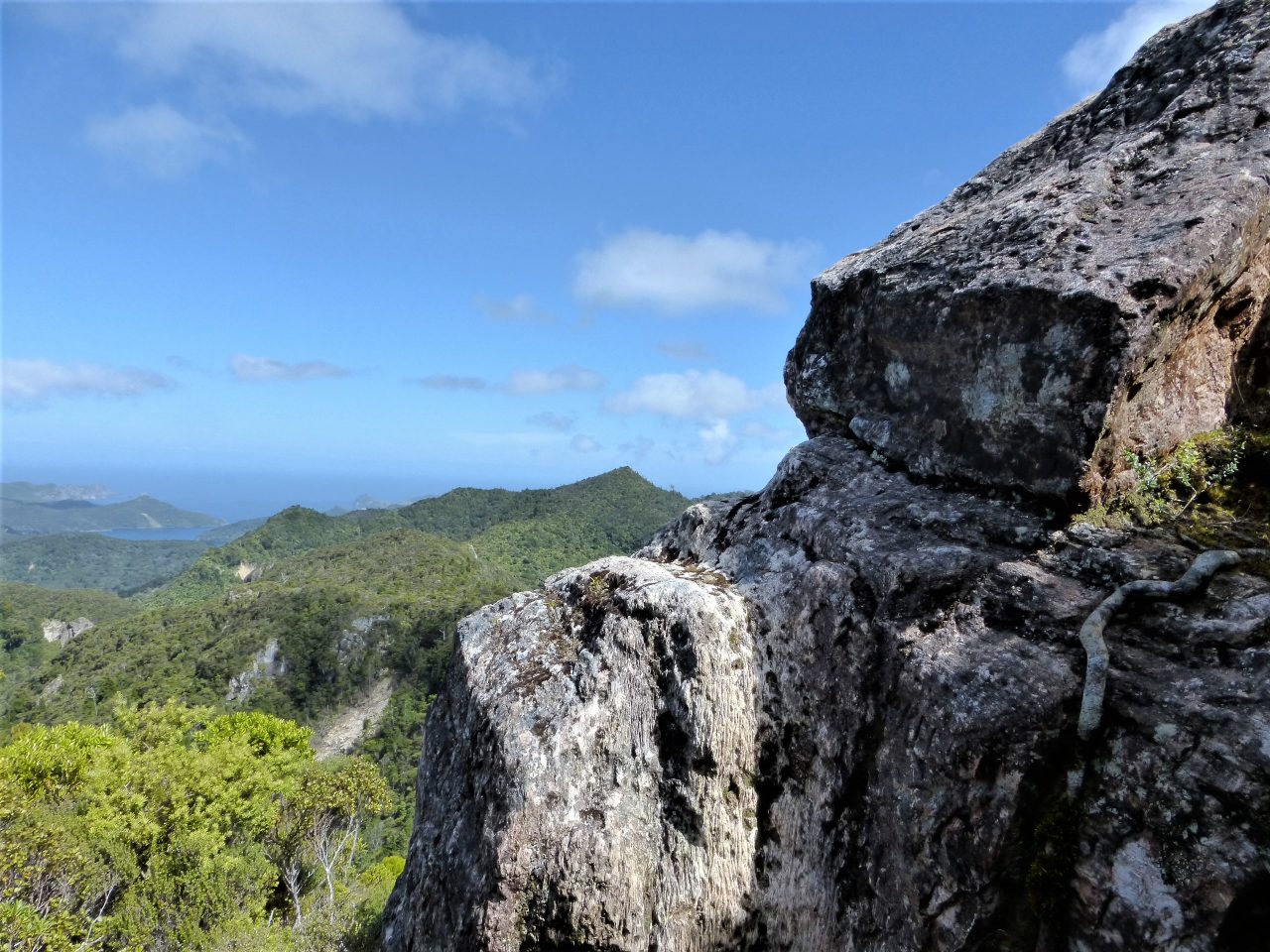
Launch Rock where the scratch marks of black petrels can be seen caused by sharp claws as they climb up before launching off to sea (Photo by Rachel Hufton).
I was fortunate to stay on Mt Hobson and assist Elizabeth (Biz) Bell, from Wildlife Management International, and her team on the Great Barrier Black Petrel Monitoring Project during December 2016. Biz has been committed to its conservation for the past 21 years – doing monitoring, research and advocacy as part of the Black Petrel Project.
Great Barrier Island holds the largest colony of black petrels in New Zealand. On the island, the estimated 2700 breeding pairs have fewer land based threats and are able to breed in relative safety. Classed as “Nationally Vulnerable”, they have been wiped out across much of their original habitat by introduced predators. They are often caught accidentally by recreational fishers and are the most at-risk seabird in New Zealand from commercial fishing.
Black petrels are remarkable birds with unique lifecycles. They are found in New Zealand’s waters between October and June but spend four months in South American waters. There, they take advantage of the Humboldt Current that sustains a wealth of marine life important for essential foraging.
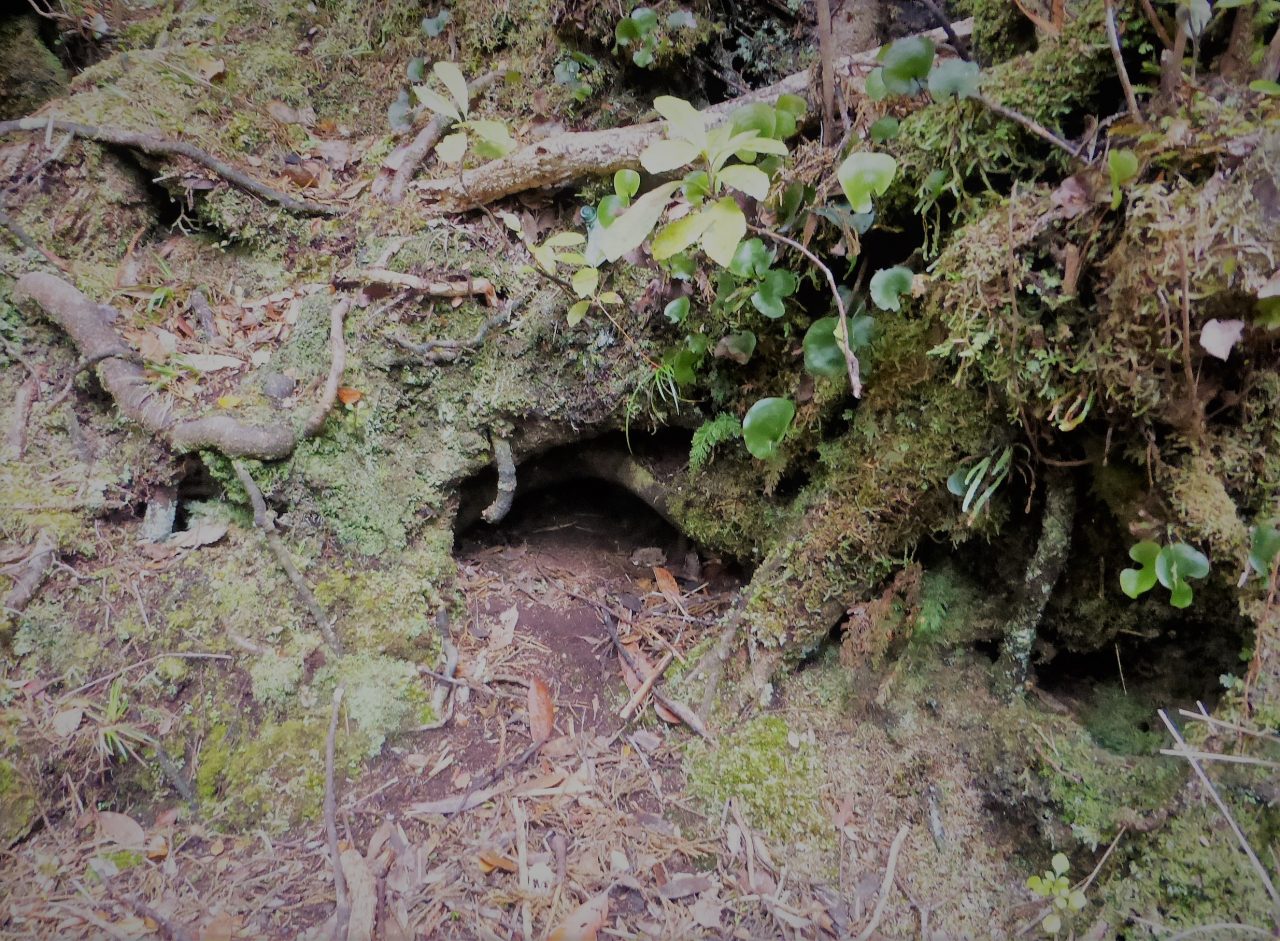
A typical black petrel burrow (Photo by Rachel Hufton).
As “philopatric” birds, they return to the same nest site where they were hatched – their acute sense of smell is thought to help them find their original nest sites on return from sea.
Males usually return to the island first. They excavate their own burrows or utilise caves, hollow logs and cavities under banks and the bases of trees. At night, during the breeding season, the male black petrel can be seen clacking loudly outside burrow entrances. Pairs are usually monogamous and a single egg is laid incubated by both parents.
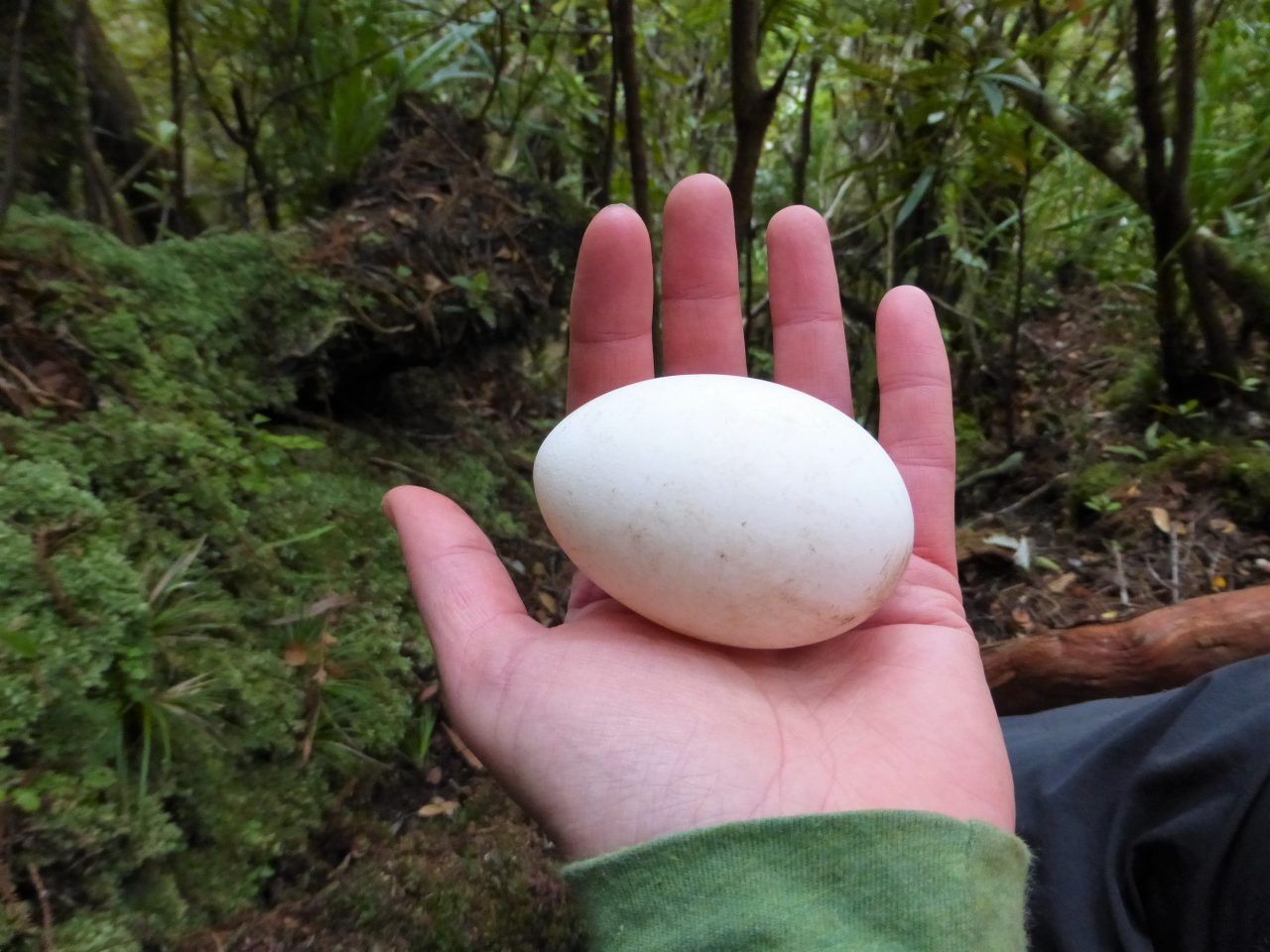
A black petrel egg (Photo by Rachel Hufton).
A typical day monitoring these birds involved orienteering through the “forest gym” to locate the 450 study burrows. After inspecting the burrow entrance for activity, an arm is put down the length of the burrow to feel for the bird or the presence of an egg. If an egg is felt then this is removed temporarily for safety. Once the bird has bitten a gloved hand, it is pulled out of the burrow and we note down its sex and condition, then give it bands for future recognition. Both the bird and the egg are returned without harm.
Occasionally, courting pairs are found together inside the burrows or the occasional interloper trying to claim the burrow for itself. Burrow ownership can cause serious conflict between males and was seen on one occasion.
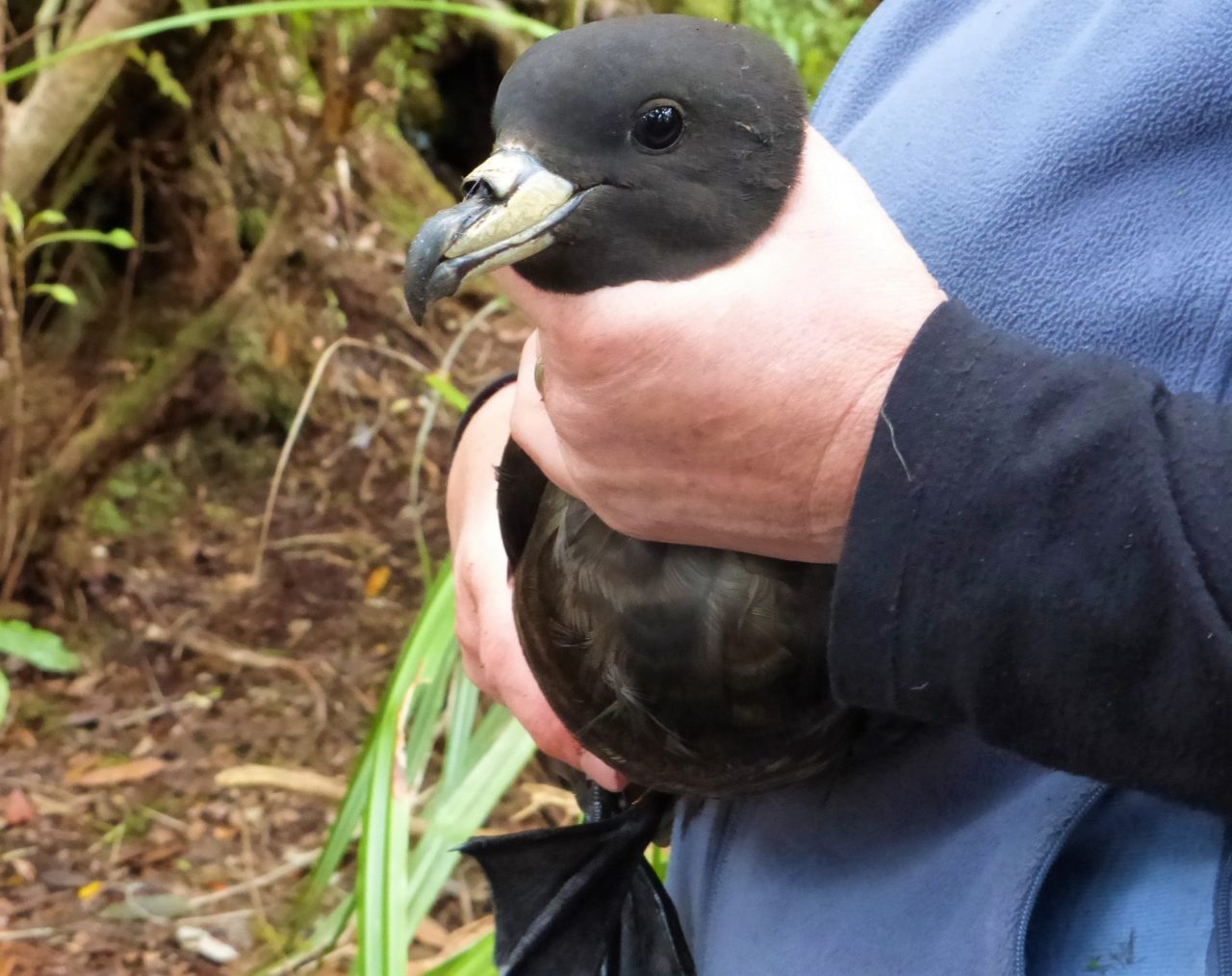
A black petrel (Photo by Rachel Hufton)
The cumulative results of the study burrows and other research such as acoustic recording monitoring help indicate how the population is doing in terms of conservation status.
Part of my time on Mt Hobson with Biz and the project team involved educating people about this incredible species and the threats they face.
We held an “advocacy day” and hosted a number of visitors who were keen to learn about the black petrels, including staff from commercial fisheries, Kennedy Warne (who co-founded New Zealand Geographic) from Radio New Zealand and Tim Higham of the Hauraki Gulf Forum.
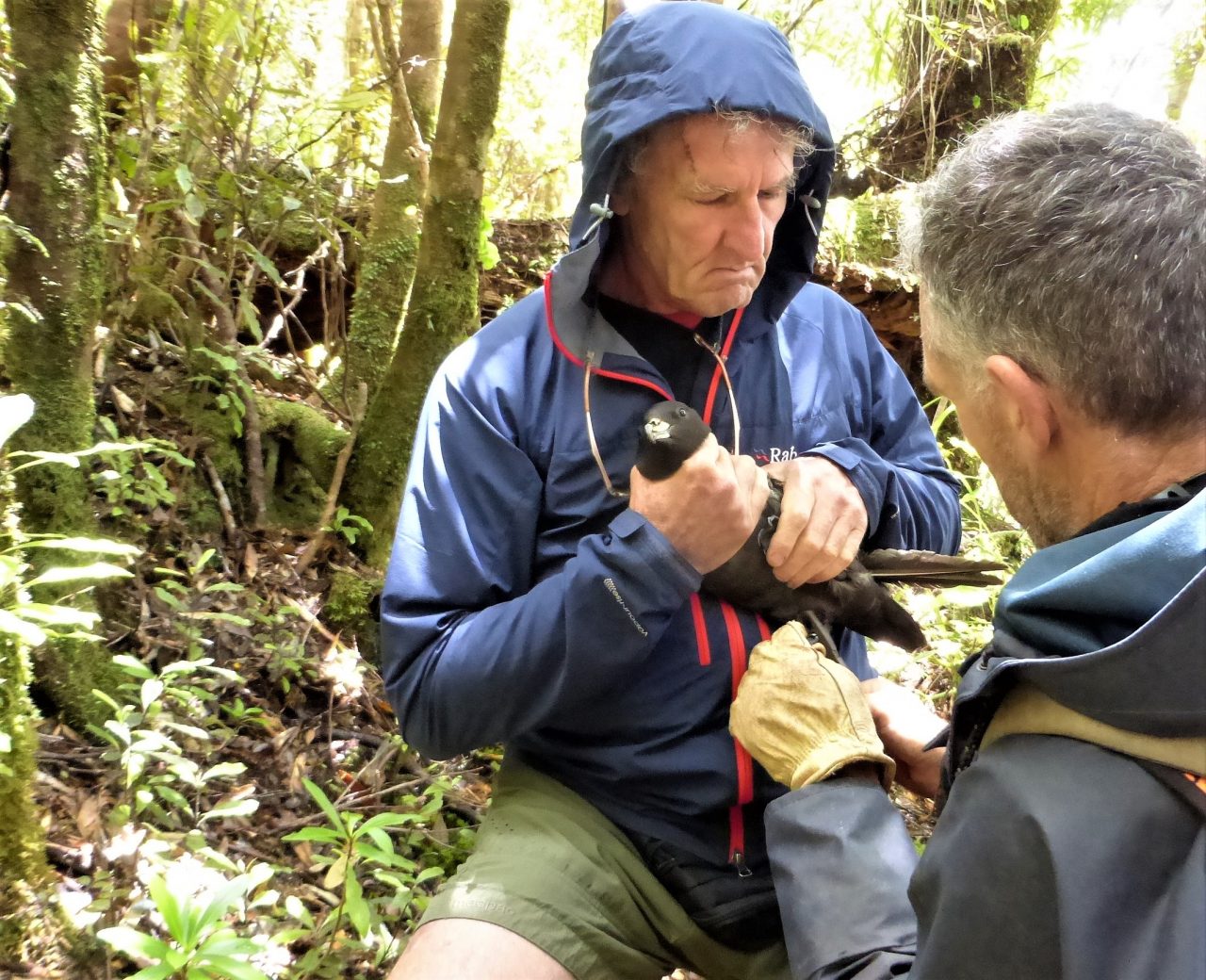
Kennedy Warne with a black Petrel (Photo by Rachel Hufton).
The purpose of the advocacy day was to help raise awareness about this important species and to show people this important nesting site first hand. Visitors learnt about the risk that fishing poses to black petrels and were able to learn how to correctly handle the birds if they became snagged on a fishing hook or in a net.
They also found out about land-based threats to black petrels, including introduced predators. Fortunately there are no mustelids or possums on Great Barrier Island and rat and cat control is currently in progress on the mountain (subject to funding). Two feral cats were caught by DOC trapping staff during my time on the mountain.

Black petrel habitat (Photo by Rachel Hufton).
We also talked about the threat of disturbance as this is a popular summer location. Visitor pressure has been mitigated through the installation of an incredible construction of stairs and decking, which has been built over the burrows to minimise disturbance to nests. At the same time, the boardwalk construction protects tree roots and helps to control the spread of kauri dieback.
The black petrel research has contributed to important processes to protect marine life in the Hauraki Gulf, such as the Hauraki Gulf Forum (Sea Change). It also led to the creation of the Black Petrel Accord, which brought together environmental groups (like Forest & Bird, Southern Seabird Solutions & WWF), government departments (like the Ministry of Primary Industries and Department of Conservation), and the fishing industry to work towards safe fishing that does not catch seabirds.
Enhanced education and awareness is evolving attitudes to address the issue of seabird bycatch. For example, Leigh Fisheries pledged to eliminate bycatch as a result of increased knowledge and innovation.
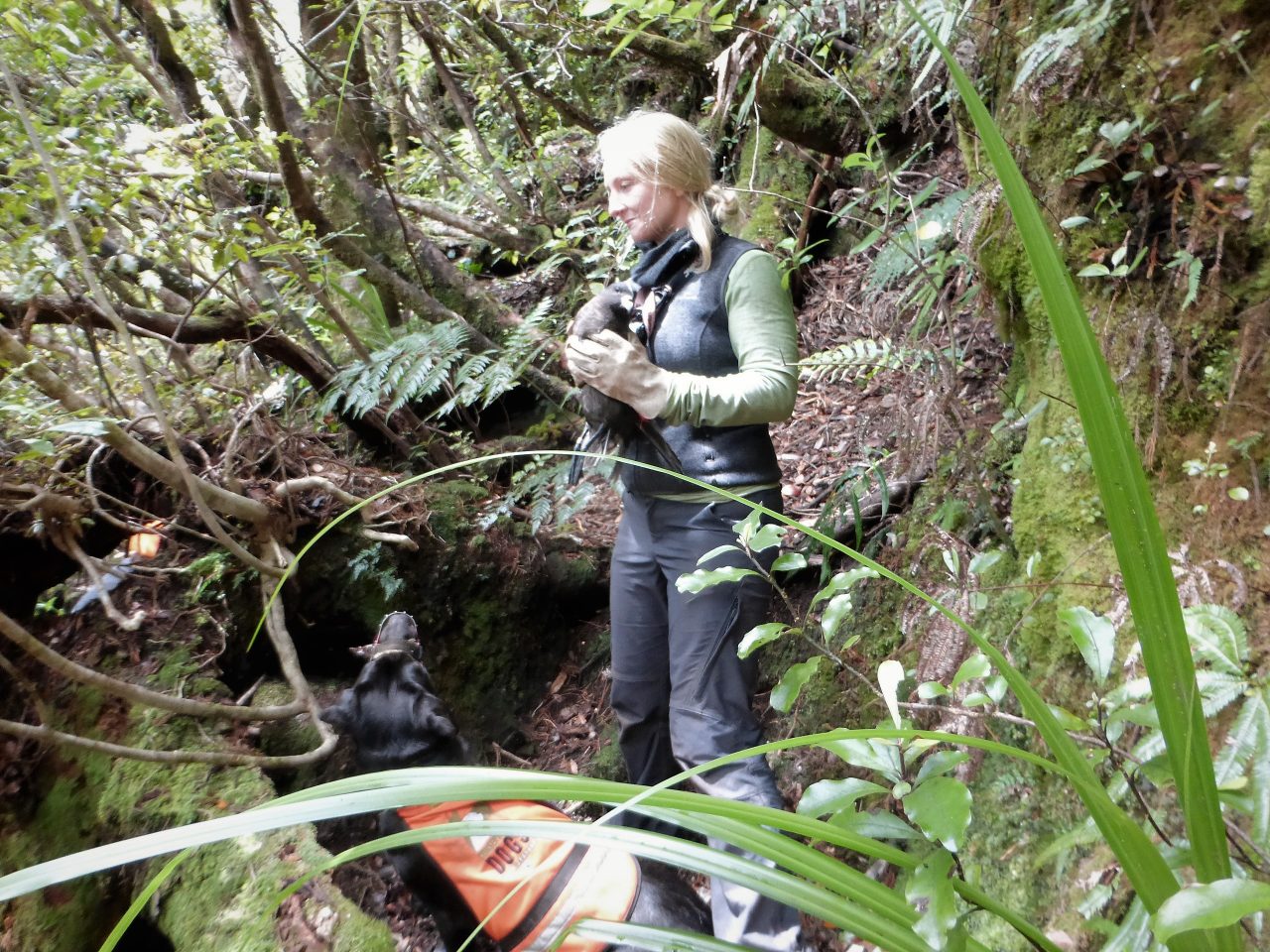
Surveyor with black petrel and seabird-dog Rua (Dabchick NZ).
The Black Petrel Monitoring Project continues into 2017 with banding of chicks and the continued search for new study burrows with random transects and help from a seabird-detector dog.
This incredible project highlights the importance of raising awareness, learning more about the breeding biology of our endangered seabirds, and positive collaboration between groups to ensure the black petrels (taiko) continue to return to their breeding grounds on Great Barrier for generations to come.
More information
For further information or to hear Kennedy Warne’s Great Barrier experience featured on “Off the Beaten Track” Radio New Zealand refer to links below.
Bell, E.A. Diving Behaviour of black petrels (Procellaria parkinsoni) in New Zealand waters and its relevance to fisheries interaction. 2016, Nortornis, Vol. 63: 57-65.
Elizabeth (Biz) Bell, personal communication, 2016.
http://wwf.panda.org/about_our_earth/ecoregions/humboldt_current.cfm
Bell, E.A. 2013. Black petrel. In Miskelly, C.M. (ed.) New Zealand Birds Online. www.nzbirdsonline.org.nz
Onley, D & Scofield, P (2016) reprinted. Albatrosses, Petrels and Shearwaters of the World. Helm Field Guide. Christopher Helm. London.
